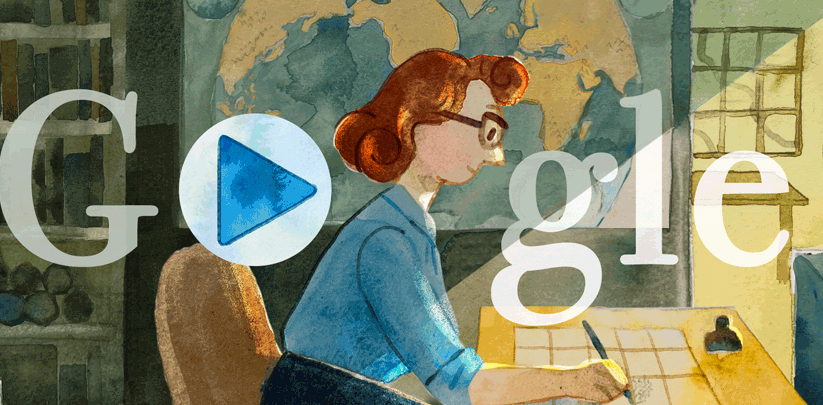The Doodle of today honours Marie Tharp, an American geologist and oceanographic cartographer who contributed to the validation of continental drift hypotheses. She contributed to the first ocean bottom map of the world. The Library of Congress recognised Tharp as one of the 20th century’s top cartographers on this day in 1998.
The Google Doodle of today includes an interactive biography of Tharp. Three prominent women who are actively carrying on Tharp’s legacy by making advancements in the typically male-dominated fields of ocean science and geology provide narration for her story: Caitlyn Larsen, Rebecca Nesel, and Dr. Tiara Moore.
On July 30, 1920, Marie Tharp, an only child, was born in Ypsilanti, Michigan. Mapmaking was introduced to Tharp by her father, who worked for the U.S. Department of Agriculture. She pursued a master’s degree in petroleum geology at the University of Michigan, which was especially notable given the dearth of women in science careers at the time. In 1948, she relocated to New York City and hired the first female employee at the Lamont Geological Observatory, where she met geologist Bruce Heezen.
In the Atlantic Ocean, Heezen collected information on ocean depths that Tharp utilised to produce maps of the enigmatic ocean floor. She learned about the Mid-Atlantic Ridge thanks to fresh information from echo sounders, a type of sonar used to measure sea depth. She informed Heezen of her results, but he notoriously dismissed them as “girl talk.”
Heezen was unable to disregard the evidence, though, when they contrasted these V-shaped rifts with earthquake epicentre maps. The bottom was undeniably moving, supporting the hypotheses of plate tectonics and continental drift. The first map of the ocean floor in the North Atlantic was co-published in 1957 by Tharp and Heezen. Twenty years later, National Geographic released “The World Ocean Floor,” the first map of the whole ocean floor that Tharp and Heezen had created.
In 1995, Tharp gave the Library of Congress the entirety of her collection of maps. She was recognised as one of the most significant cartographers of the 20th century by the Library of Congress during the 100th anniversary celebration of its Geography and Map Division. The observatory where she began her career gave her the first Lamont-Doherty Heritage Award in 2001.
To start your journey through Tharp’s incredible life and scientific discoveries, click on the Doodle of the day!
- Top 5 Health Insurance Stocks to Add to Your Portfolio - July 26, 2024
- 7 Reasons Edamame is Great for Your Health - July 26, 2024
- 2024 Paris Olympics: How Many US Athletes Are Competing? - July 26, 2024





